MAY
2010
With web design firms cropping up at almost every nook and corner of our cities, and with each promising the best at widely different prices, it can be quite confusing to choose the right web design partner.
It is not unusual for a small business to be tempted into contracting the firm that offers services at the lowest price. After all, it makes sense to save every penny when the business is just being set-up and evolve one’s online presence as the business evolves, and the needs evolve.
Yet, quite often a small business finds that it got a raw deal or finds itself being arm twisted by the once seemingly perfect web design partner. So what goes wrong in these cases? If you talk to the smart SMBs who succeeded in finding the right design/IT partner in the first go, you will notice a common thread. The smart ones took care of the basics.
What are these basics and how do you find yourself the right web partner who also has the capability to ‘deliver’ at all phases of your business?
In this two part series, we look at the top 10 things you need to check.
1. Domain Rights: Stay clear of the potential arm-twisters. Make sure that the company you hire registers your domain and hosting in your name. And that you are provided all login info for both your domain name control panel and your web hosting account. It is quite common to find unscrupulous small business owners who had to change their domain name or fight it out with their web design firm because it refused to give them control of their domain name when they decided to part ways.
2. Fly-by night operators: Low barriers to entry and a large pool of freelance web developers have meant more choice and better prices for customers. If you are on a shoestring budget, you may want to hire a freelancer to design your website. But will he be around an year later when you need changes to your web pages? Or will he have the time to meet you during business hours? Will he have the time and the skillset to launch a fully-functional website in the committed time-frame?
3. Competence Levels: Your website is your online presence on the world wide web. It is what most visitors who come to your site through search engines see first. And we all know the importance of the first impression. Does the web design agency have what it takes to deliver the “right’ first impression?
- Do they have the requisite skills?
- And the creativity?
- What kind of work have they done for other small businesses?
- Do they have any references?
- Have their clients used them more than once?
- Do they deliver on time?
These are the typical questions you need to find answers to when deciding on your web/IT partner. Again, don’t get carried away by a big client list. Talk to a few of their clients and find out what their experience in dealing with this firm was.
Ofcourse, as in all cases, there may be exceptions where you may want to hire a completely new design firm because they may offer the lowest prices or because they may be willing to provide more for the same amount or simply because you know them personally and so feel that you can trust them. In such cases, avoid the urge to rely entirely on your gut-feel, and do a background check. It will pay to check if the people behind this new firm have the right skills & competence levels and if they are capable, credible, hard working and trustworthy.
4. Usability: How the information is presented on your website is critical to the success of your website. If site visitors feel lost when they arrive on your site or have to pore over the site pages to find the info they are looking for, then you have lost them. It takes a lot of effort to get targeted traffic on any website but takes only a click on the x icon to lose it. With several thousands of options to choose from, the average internet user decides in the first few seconds of arriving on a site whether its good enough for him to stick around. If they have to wait for pages to load or if there are annoying animations, broken links, too much clutter, it won’t take them 10 seconds to bid goodbye.
It is imperative, therefore, that
- the site architecture has a specific focus on usability.
- the site is built using standards compliant, clean code
- all important information is available at a glance or can be easily reached through an intuitive interface and tactfully written copy.














